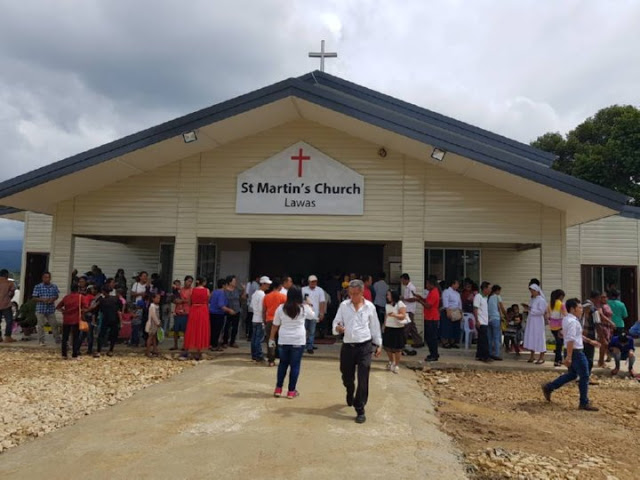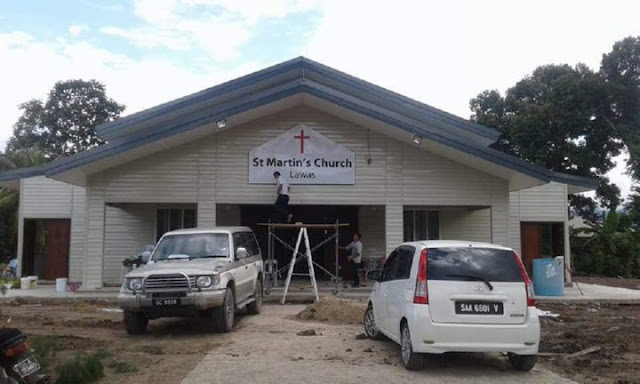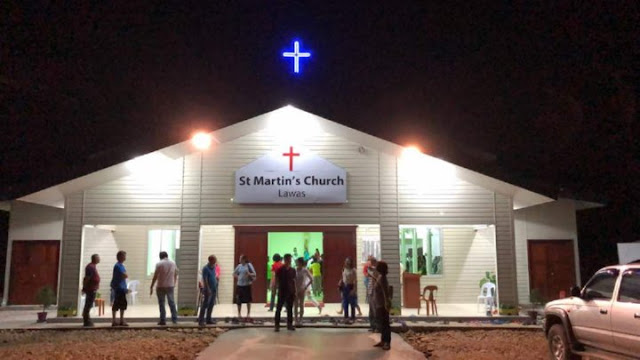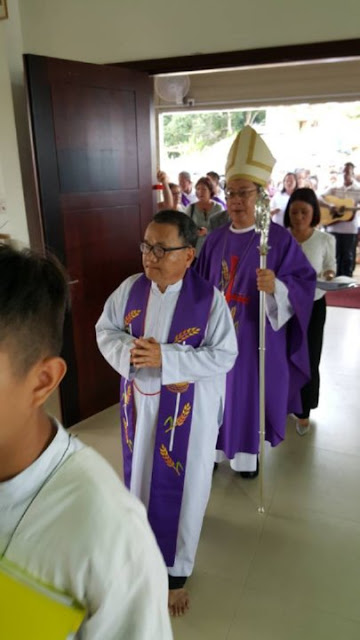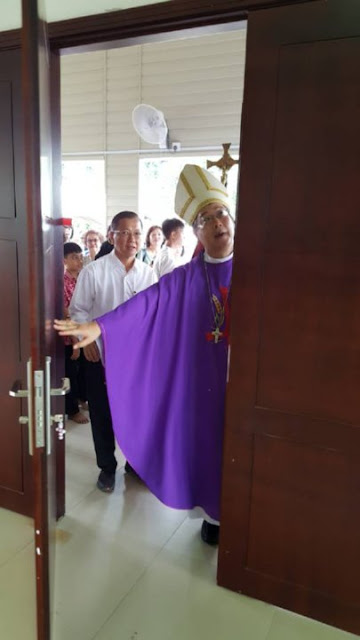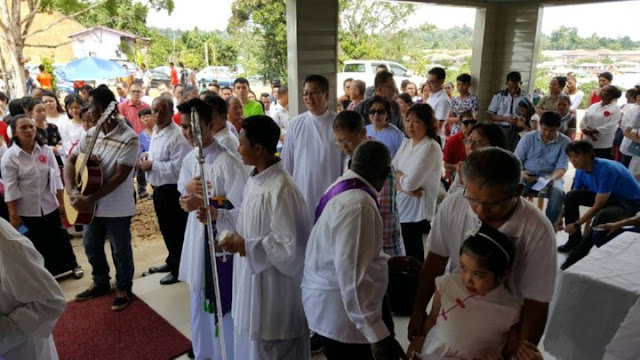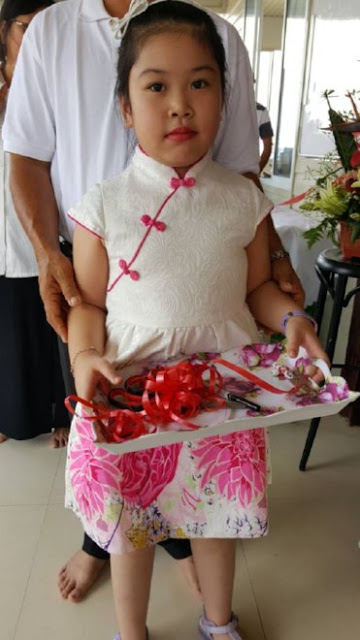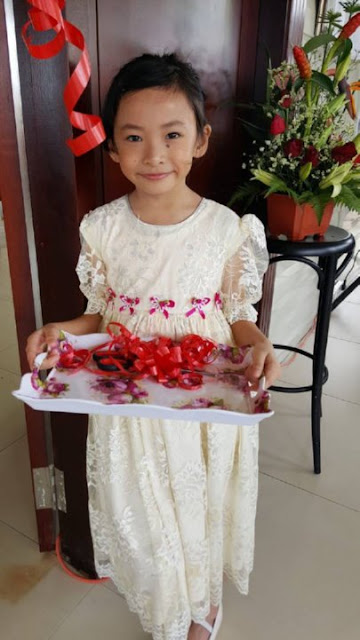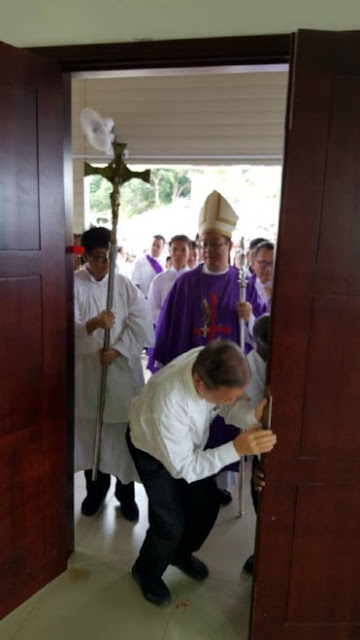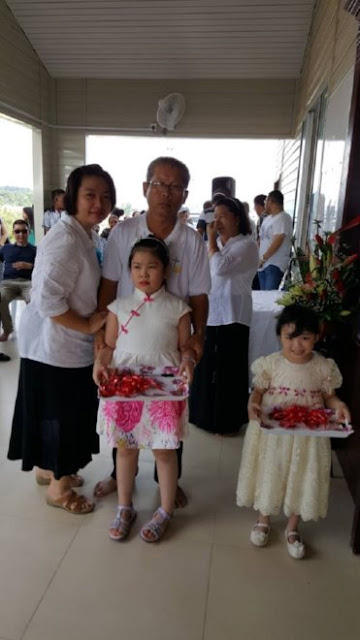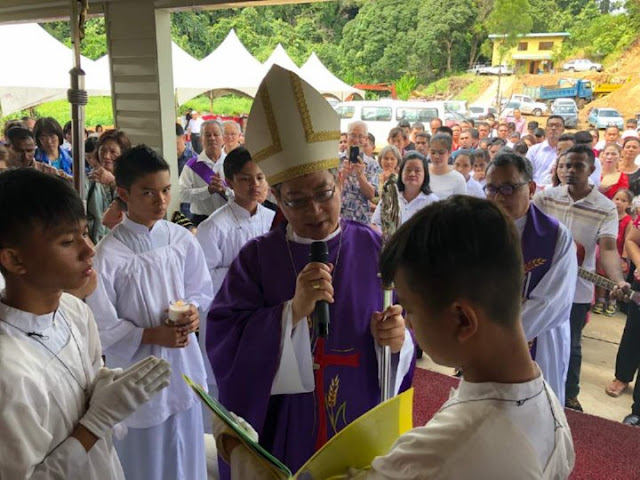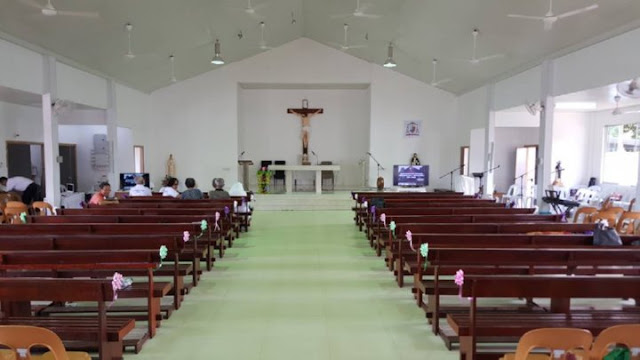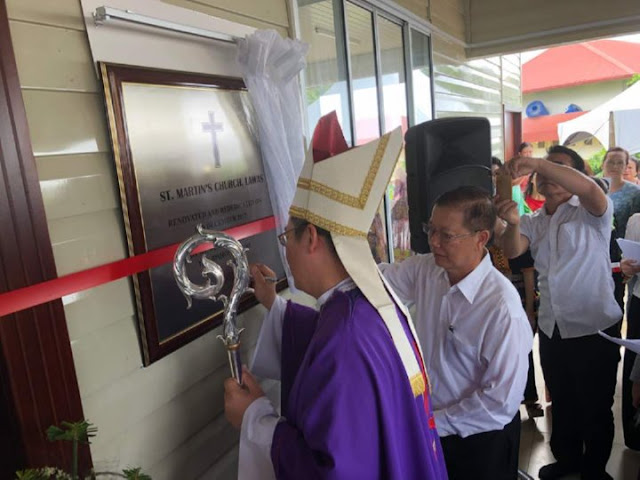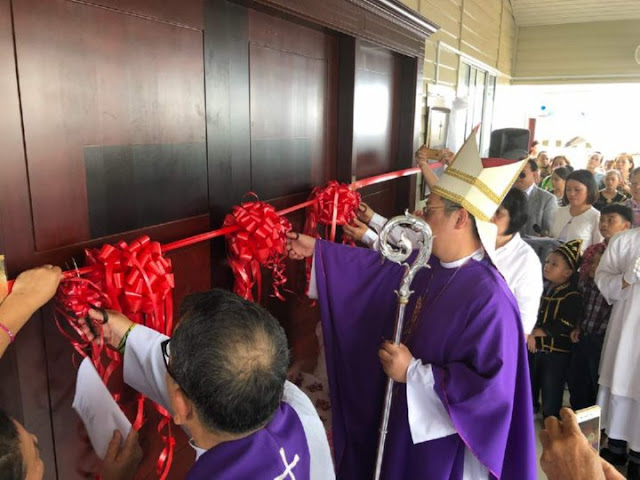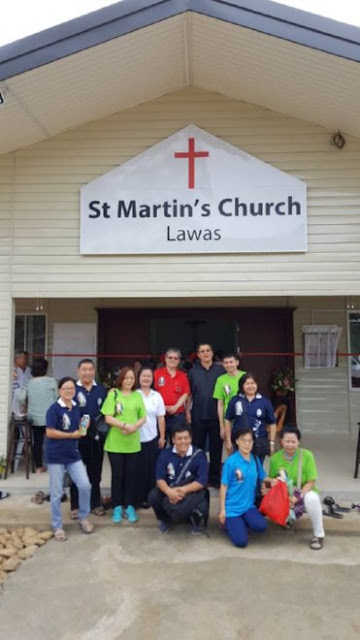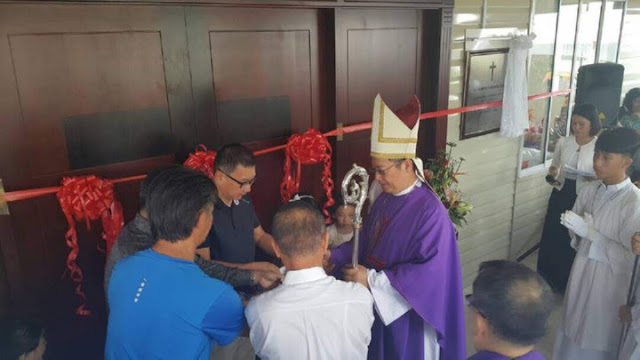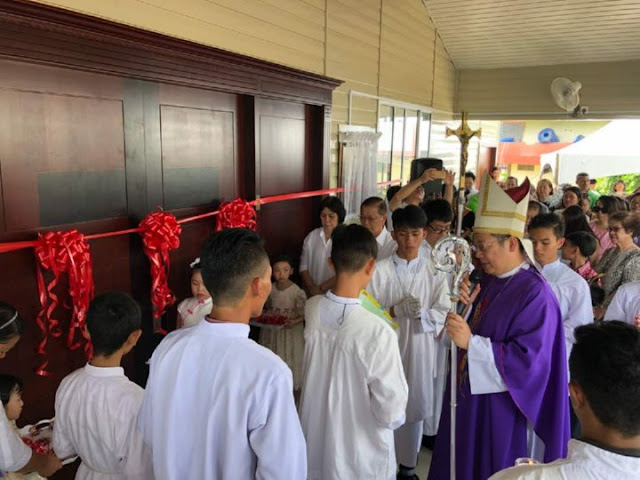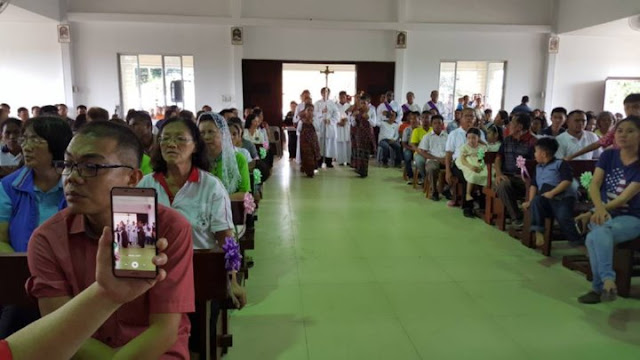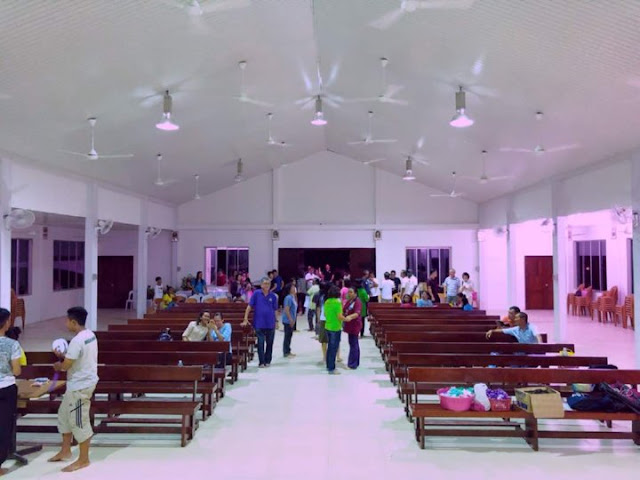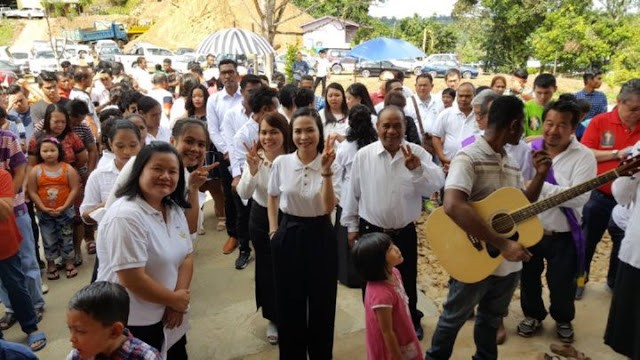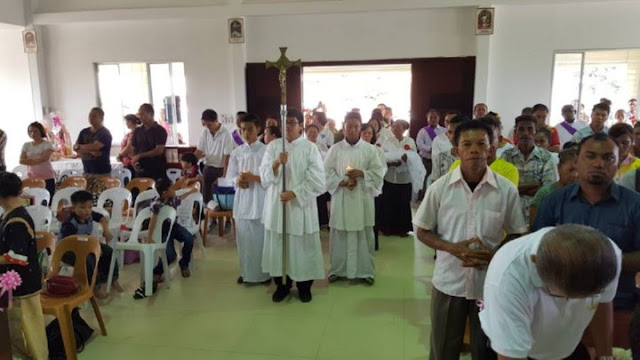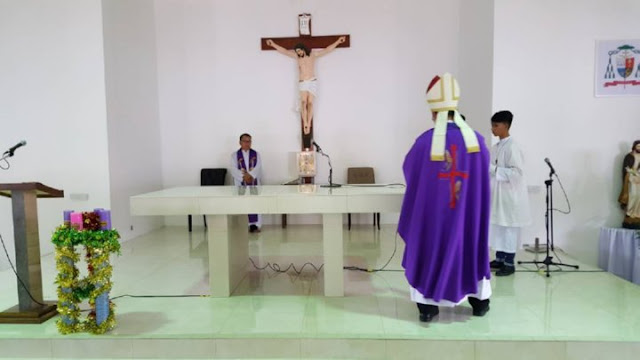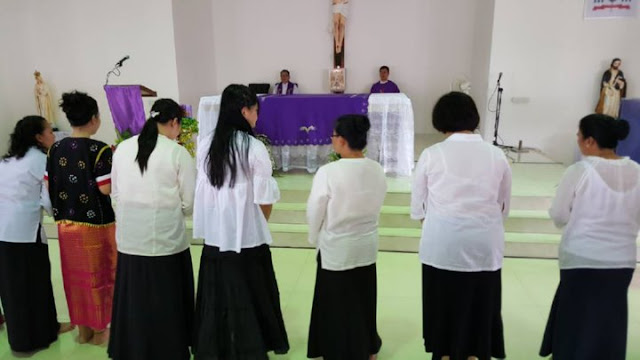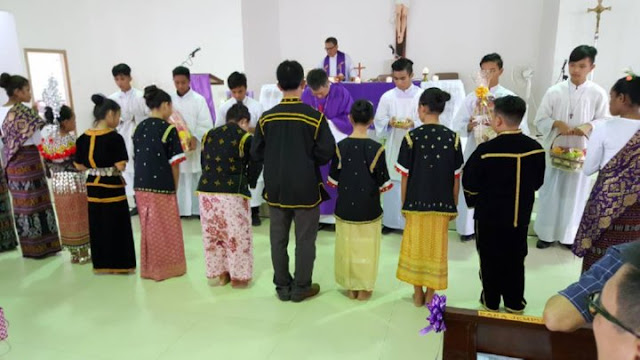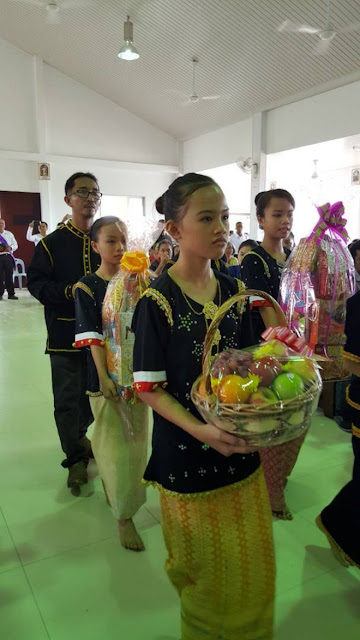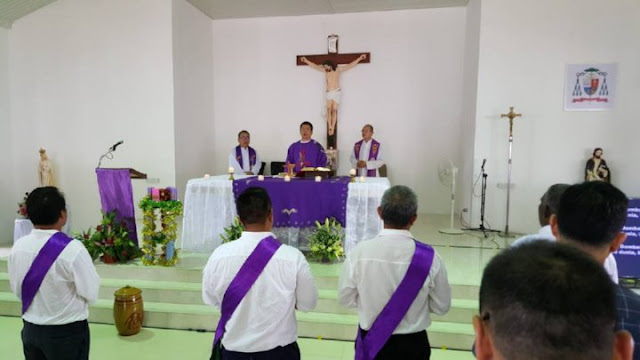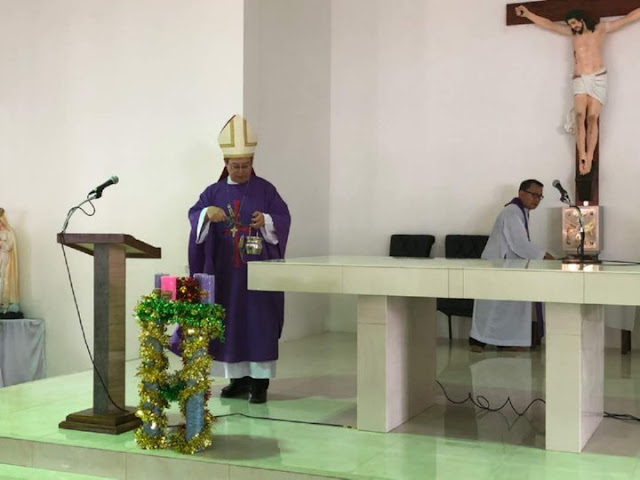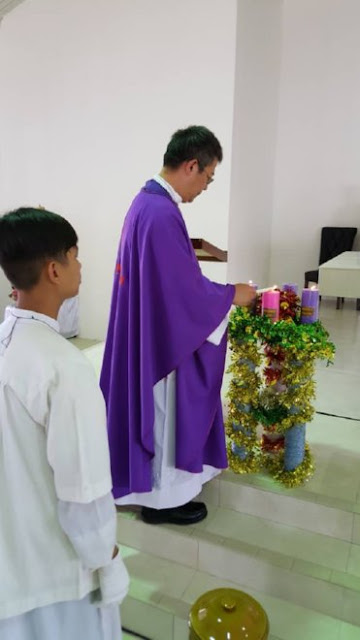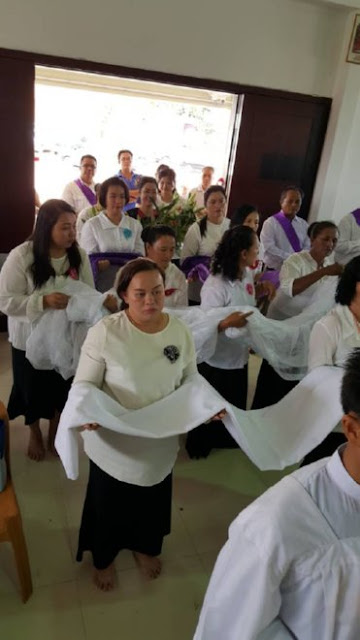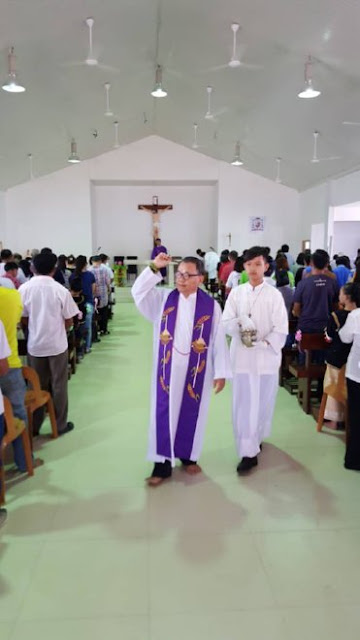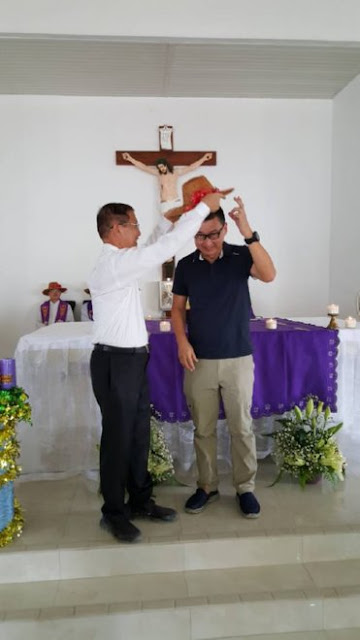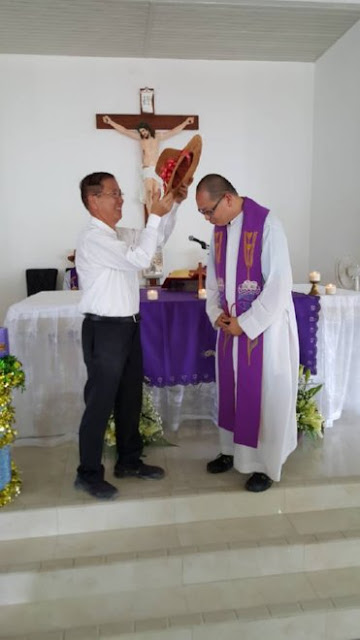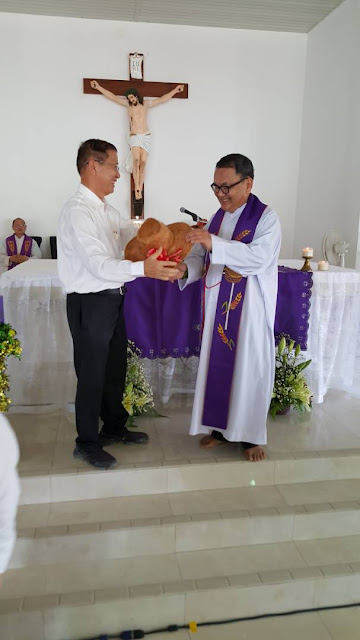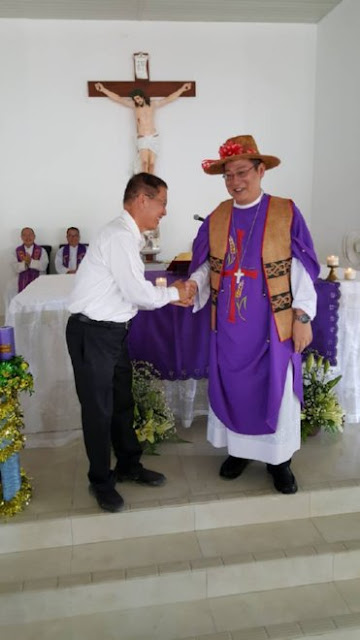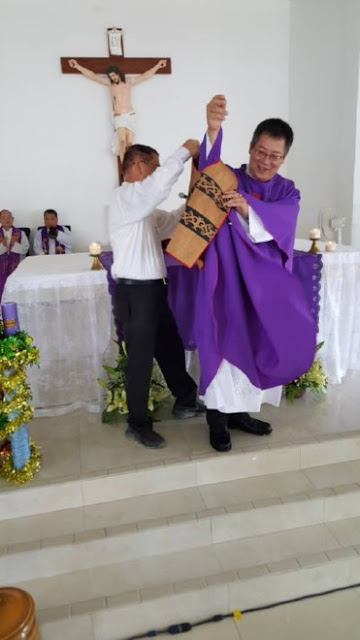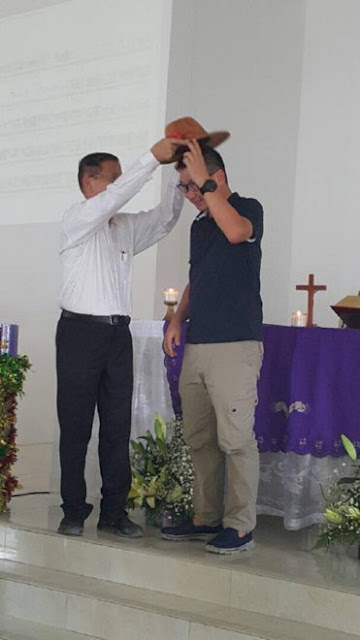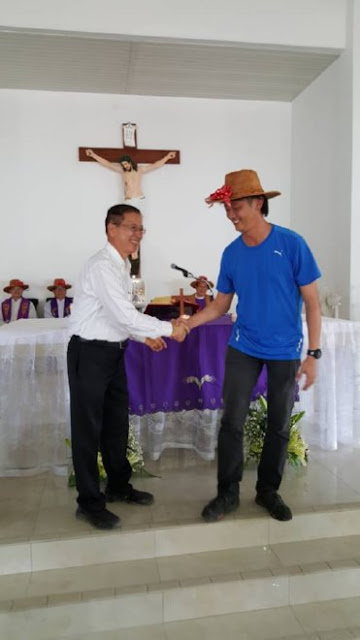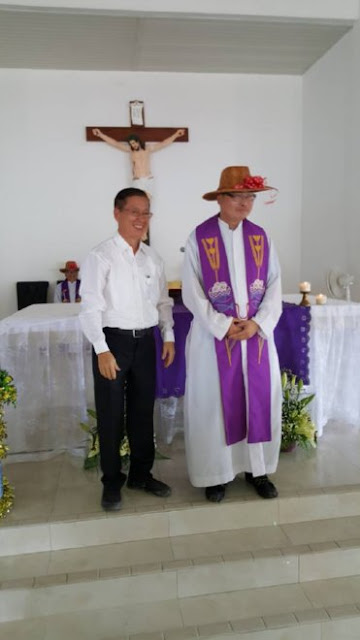Lawas is a small frontier town in the northeastern corner of Sarawak state in Malaysian Borneo. The town is located in a strip of Sarawak territory sandwiched between the Temburong district of Brunei and Malaysia’s Sabah state. It is cut off from the rest of Sarawak and is more easily accessed from Sabah. For some years in 1960s, Lawas had been looked after by Fr Lester J. Lonergan, an American Mill Hill Missionary. After his ten years’ of service were complete he had to leave Malaysia and his charge reverted to Limbang.

Photography and events story reported by Alfred Wong
The Lun Bawang Tribes -compiled by Ben Chang
The Majority of the Lawas community is mainly consisted of the Lun Bawang tribes. The Lun Bawang (formerly known as Trusan Murut or Southern Murut) is an ethnic group found in Central Northern Borneo. In the Malaysian state of Sarawak, the Lun Bawang (through the term Murut) are officially recognised by the Constitution as native of Sarawak and are categorised under the Orang Ulu people; Historial records show that they are the indigenous tribe native to the highlands of North Kalimantan (Krayan, Malinau, Mentarang and Long Bawan), Brunei (Temburong District), southwest of Sabah (Interior Division) and northern region of Sarawak (Limbang Division).
Lun Bawangs were mostly animist before the 1920s. During these early times, the Lun Bawangs were a dangerous tribe, always on the war path, looking for heads of their enemies.Taking of heads was an indication of someone’s bravery, and maidens love such heroes.The Brooke Adminstration regarded the Lun Bawangs as one of the fiercest and the worst of all the tribes they ever attempted to pacify. The Brooke administration would not permit other people to go up among the tribe for fear of being killed because these natives were fierce headhunters. When they left their old life ways and belief and embraced christianity, the Lun Bawang became the cleanest and the best tribe of Sarawak. Today, many Lun Bawang are highly educated.
The great transformation
The Brooke administration had recorded in the museum journals that the Lun Bawang house had been found to be the cleanest in Sarawak, after being regarded as the dirtiest. It was an indication of the great spiritual transformation taking place among the remaining Lun Bawang who survived the various epidemics that swept their region between 1900 to 1910.
When Hudson Southwell and his friends built themselves a small hut in Sepangah, Limbang in 1928, a group of spiritualy hungry Lun Bawang visited them and became the first Lun Bawang from Trusan/Lawas to become Christians. These individuals went back and a great transformation swept the Lun Bawangf villages- they threw away their old ways, their rice wine and everything and any rituals connected with animism and ancient cultures. No other tribes in Borneo had done such before.
Further conversions continued under the rule of the White Rajahs (Vyner Brooke) in Sarawak. Christian missionaries (particularly of the Borneo Evangelical Mission) had better accessibility to the Lun Bawang settlements in the interior and highlands, and proceeded to preach Christianity to the Lun Bawang people.
Lun Bawang Culture
Today The Lun Bawang tribe is referred by some visitors as one of the most hospitable people they came into contact.In the 1960’s and 1970’s, when they were still living in long houses, any visitor will be invited for breakfast, lunch or dinner as many times as there are families in the long house.For instant, if there are 30 different families in the long house, the visitor or visitors would be invited to eat 30 times.The visitor will be given food to bring when he leaves.In the not so distant past, any one can go up a long house and stay there for the night and they will be taken care of by the long house inhabitants
The Lun Bawang community has a unique culture- the culture of giving. That is why they are very hospitable to visitors. In the not so distant past,they give ration to travellers who put up for the night or two. They are known for giving gifts of all kinds to friends who visit them- an act of good will and gratitude and good heart.You see this culture during wedding ceremony where gifts were exchanged between the families. Those gifts are given by relatives as a show of love and support to their kin. Well their generosity is not only about the giving things but also in helping. They help in any function. In a wedding party, friends come to cook, to do all kinds of work to help the family concern.That is why such festivities are full of joy.
Today the Legacy continues……………..
The New St Martin Church, Lawas.
A remarkable event happened on 17th December 2017 when Right Reverend Bishop Richard Ng blessed the new 450 capacity St Martin Church, Lawas.
The idea to build a new church on the existing location of old St Martin Church, Lawas was mooted by Right Reverend Bishop Richard Ng in January 2017 during his pastoral visit to the parish. The 54 years old wooden church was built in 1964 by Philipino parishioners, constructed primarily of timber with some brick partitions to adjoining extensions added over the years.
The main structure was in bad state of decay and partly infested with termites to the columns and wooden ceilings. A decision was reached to demolish the existing church and build a new church on existing footprint and increase two side wings for additional internal space.
The existing church was demolished in March 2017 and the new substructural works for the extended wings were completed in April 2017 for a new 6000 square foot church to be erected.
It was decided that the new church was to be built using Amcan IBS building system to be cost effective and faster completion time. The external cladding is colourbond steel and finished internally with gypsum board. The main church ceilings is mild steel strip ceilings. The wall framing of the new church is galvanized steel framing.
Construction of the new church began in May 2017 and by November 2017 the main building including an annex toilet block has been completed and ready for fit-out of the main church fittings and fixtures including lightings and PA system.
The new church comprise of a 4000 square foot main church hall with 2000 square foot at the rear of the building comprising of a meeting room, priest room, Sacristy and two toilet/bath rooms. There is also a confessional room and a PA control room at the side of the church. Externally there is a short walkway linking to the adjacent toilet block for parishioners.
At this juncture, the parish caretaker house is under construction and expected to complete in March 2018. This caretaker building can also double as house for visiting priests and others.





